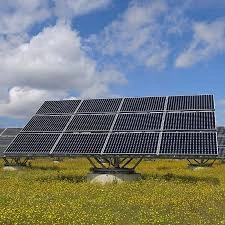tie grid inverter
Understanding Tie Grid Inverters An Essential Component of Modern Solar Power Systems
As the world increasingly embraces renewable energy sources, solar power has emerged as a leading alternative to conventional energy. A pivotal technology in harnessing solar energy efficiently is the tie grid inverter. This device plays a significant role in converting the direct current (DC) generated by solar panels into alternating current (AC), which is essential for powering homes and feeding electricity back into the grid.
What is a Tie Grid Inverter?
A tie grid inverter, also known as a grid-tied inverter, is a critical component in solar energy systems that are connected to the power grid. Unlike off-grid systems, which rely solely on battery storage, a grid-tied setup allows excess energy produced by solar panels to be sent back into the electrical grid. This two-way energy flow not only powers your home but can also earn homeowners credits or payments through a system known as net metering.
How Does it Work?
When sunlight hits photovoltaic (PV) solar panels, they generate DC electricity. The tie grid inverter steps in to convert this DC electricity into AC electricity, making it compatible with household appliances and the broader electricity grid. This conversion process is vital because most home appliances and grid systems operate on AC power.
In addition to converting electricity, tie grid inverters also play a crucial role in ensuring that the energy produced is synchronized with the grid. They automatically adjust the voltage and frequency of the electricity to match that of the grid, ensuring a seamless integration of solar energy into the existing power system. Furthermore, most modern inverters are equipped with safety features that disconnect the inverter from the grid during power outages, preventing backfeed into the grid, which could jeopardize the safety of utility workers.
tie grid inverter

Benefits of Using Tie Grid Inverters
1. Cost-Effectiveness Grid-tied systems are generally less expensive than off-grid systems because they eliminate the need for large battery storage solutions, which can be costly and require regular maintenance.
2. Net Metering Homeowners can often receive credits for excess energy they supply to the grid, effectively reducing their electricity bills and providing an incentive for solar installation.
3. Efficiency With advancements in technology, modern grid-tied inverters operate with high efficiency, ensuring that a significant portion of the energy produced by solar panels is utilized.
4. Simplicity Because they work directly with the grid, grid-tied systems are often less complex to install and operate, making them accessible for a wide range of consumers.
Conclusion
In summary, tie grid inverters are an integral part of today's solar energy landscape. They facilitate the efficient conversion of solar power into usable electricity, promote energy independence, and foster a sustainable future. As technology continues to evolve, these inverters are becoming more efficient, reliable, and user-friendly, paving the way for broader adoption of solar energy systems worldwide. For homeowners and businesses considering solar energy, understanding the function and benefits of tie grid inverters is essential for making informed decisions that contribute to a more sustainable energy future.
-
Unlocking Energy Freedom with the Off Grid Solar InverterNewsJun.06,2025
-
Unlock More Solar Power with a High-Efficiency Bifacial Solar PanelNewsJun.06,2025
-
Power Your Future with High-Efficiency Monocrystalline Solar PanelsNewsJun.06,2025
-
Next-Gen Solar Power Starts with Micro Solar InvertersNewsJun.06,2025
-
Harnessing Peak Efficiency with the On Grid Solar InverterNewsJun.06,2025
-
Discover Unmatched Efficiency with the Latest String Solar InverterNewsJun.06,2025







